Here we are again. If you're a first time reader, here is how this will go: I'm going to post huge, lone paragraphs (therapeutically) ranting about why I liked my favorite games of the year (and even some things I disliked about them) paired with two images. Each individual image will link to a music sample of that game. If you are on a PC, you'll want to stretch the width so both images are on the same line as intended. Mobile or tablet may not be the best way to read this, but feel free to give it shot. Finally, it may be stupid to aim to write giant walls of text (and I went all out this year), but that's just how I roll; if that bothers you, I'm sorry for the inconvenience.
One final use of these lists is to let people get a grasp on my gaming tastes, personality, and history. With the descriptions of
I'm skipping writing a "late to the party" entry this year, simply because I didn't have the time and I don't want to dwell on this list much longer, but that game is most definitely Tom Clancy's Rainbow Six Siege. Siege focuses on my favorite elements/modes of objective-based twitch shooters while bringing a lot to the formula with creative classes and R6-lite options. I actually had the chance to play it a tiny bit when it came out in December 2015, but not enough to say I've really played it before 2016 (during which it saw several improvements). Anyway, that mini-entry aside, onto the main course:
X
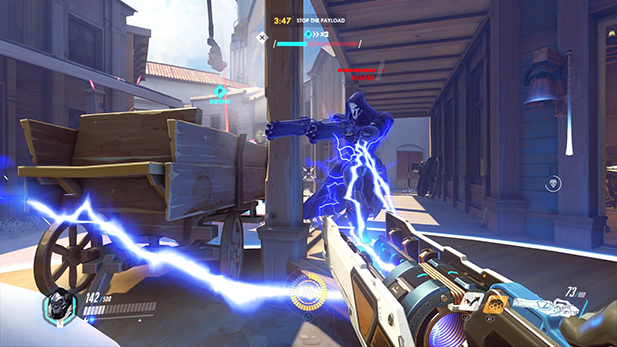

Overwatch (PC, PS4)
Blizzard Entertainment, Blizzard Entertainment
For all their famed polish, I’ve never been too endeared to Blizzard and haven’t felt attracted to their output since the WoW era. Overwatch is a different story. For one, it doesn’t have the kitschy art that plagues their fantasy games. OW’s colorful environments, full of neat details, are pleasing amalgams of utopian futurism and globetrotting tourism. It’s the roster’s slick designs, built around distinctive silhouettes, which sells it. Blizzard has shamelessly taken Team Fortress 2’s classes (and interactions, multi-media, objectives, etc.), spread around the UberCharge, and distilled them with a hotbar and MMO trinity mindset, pulling from everything else in the process. You get a cooler Medic, Scout, and Demoman, but also Call of Juarez’s concentration, Titanfall’s titans, and Halo’s bubble shield. And there’s no need for TF2’s design bloat when they can create more characters (like fighting games). Mastering each of their unique playstyles for switching or randomized teams gives OW an endless well of wide-ranging player growth, something I’ve barely scratched the surface of. The downside is that balancing is tougher, as seen with frequent patching in just its first year (see: healers), but it’s a worthwhile trade. Team-based objectives, and feeling dead weight of idiots more so than TF2, means playing with randoms can be anything from a lovely surprise to a strong case for misanthropy (I’m a solo queuer by habit, so yeah…). The maps are generally decent to good, but the lopsided pacing of the 2-point capture make for laborious final battles where (comboing/countering) ultimates becomes all-important. In general, ults end up as a burden to the game’s flow and there’s too many factors to treat them like a super in a fighter. What OW does outside of games is innovative in how... manipulative it is. Voting invigorates post-match screens and “Play of the Game” massages someone’s ego better than CoD’s final killcam. I’m not bothered with the dopamine-chasing LootCrate™ crap they are using to subsidize their future content (or Californian mansions) because I don’t feel like I’m missing options like with Hearthstone and it obsoletes needing yet another progression system. It does get too exploitive when factoring in limited seasonable events though. Save the whales.
IX
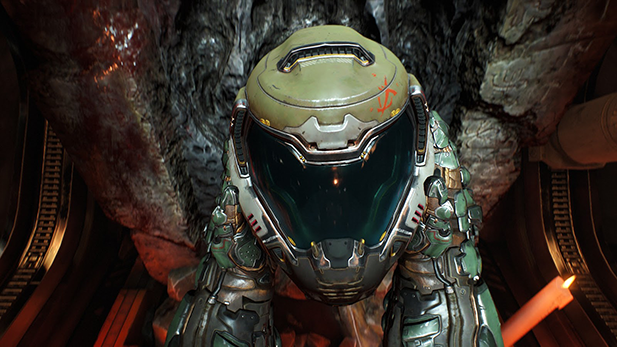
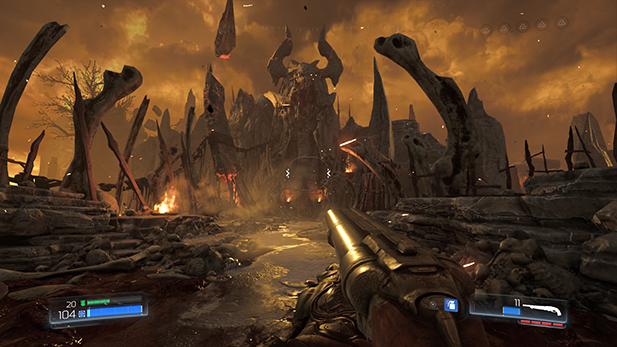
Doom (PC)
id Software/MachineGames, Bethesda Softworks
First, let’s talk about what 2016’s DOOM (4) isn’t. DOOM is not, well, “DOOM”, and it’s a bit unnecessary (if not cruel) to equate the two. It’s only a little more Doom than Serious Sam is. You can’t quite call it a throwback either, because even back when SS3 came out, there were already plenty of games doing this sort of thing (granted, mostly badly). With D4, we do still get a sort of modernized vision of Doom, but only portions of it, segmented apart. Its core is a series of ambushes to harass you while you explore and player activated arenas that mark a level’s climaxes (allowing you to scout and plan ahead). These build to a crescendo when new enemies and weapons are introduced, until plateauing prematurely, three or so levels before the end. It would be a mistake to say the D4 only features arenas, but it wouldn’t be to say they are the fun parts. Exploring through the open, strikingly hellish environments is enjoyable enough at first, but after a while it begins to feel like a checklist. They went on to tether half of the progression system to this slow-paced padding, a mistake that defies comprehension. Thankfully, a patched-in “arcade” mode completely salvages replays into something exciting: everything is unlocked and you are given limited lives. The solid FPS boss fights were a highpoint, I only wish there were more. (My favorite was actually in a player-made SnapMap against a Baron of Hell with MMO raid mechanics.) The skirmishes force you to be on the move, involving dodging projectiles and hopping between floors. The swift Resident Evil-like executions grant you breathing room and healing, in place of cover. Offense is the best defense. The weapons with The New Order-like upgrades are inspired, but they’re also a giant missed opportunity: the balance is off (Gauss Rifle > *), ammo conservation is trivialized, and their interplay with the enemies is shallow - a concept that defined Doom and was nailed by contemporary SS3. Also, nothing here truly justifies a room-clearing BFG. Wasted potential aside, the chaotic combat really works, but that’s not what makes D4’s campaign extraordinary. The secret is that it’s not about being “old-school”, it’s about “good graphics” - how an awesome aesthetic can make a good game great. It’s maybe the best looking game I’ve ever seen in motion, the music drives me into a frenzy, it’s legitimately funny, and butchering enemies is cathartic. Not quite Doom, but pretty damn cool.
VIII
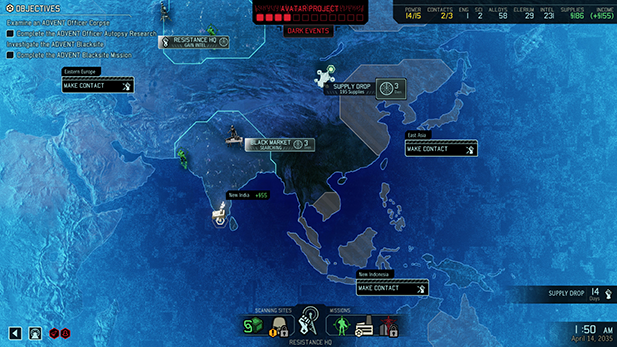
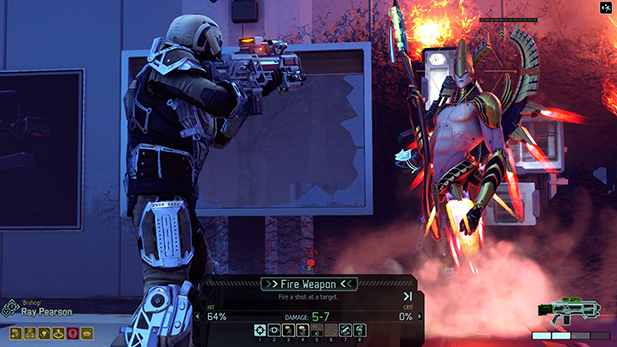
XCOM 2 (PC)
Firaxis Games, 2K Games
In 2012, X-COM came back as XCOM, something very different and kind of a step backwards. Streamlined to an intuitive tabletop ruleset, it was essentially a turn-based cover-shooter that succeeded in enthralling you in a tense atmosphere, making those misses all the more devastating (aided by iron man rules). At least for the base game, this decent concept was let down by the middling encounter design, turtling tactics, and a reverse difficulty curve. XCOM2 is a dramatic improvement that builds on the nerve-wracking mood of the first one. The inclusion of a turn timer singlehandedly deepens every aspect, also nerfing turtling. Those who complain about timers (in general) want their dessert before they finish their vegetables, but what they should understand is that, even if it’s painful or scary, depth and tension is what makes interactivity emotionally stimulating and that comes from making your actions have weight and consequence. A problem can arise though, where the timer becomes almost impossibly strict on VIP extraction missions, thanks to randomized maps (switched from iron man to reset-on-failure). I’m not a big fan of randomized anything, let alone maps, but besides the aforementioned example, XC2 remains sound. This comes down to having really good enemies that are fun to fight and solid rules for (destructible) terrain, two crucial elements XC2 nails. The introduction of Concealment adds a neat stealth layer to tactics which massively changes the first rounds. The strategy layer features way more intriguing choices now, both in how you build your base and which missions to do on the map (juggling penalties from the ones you don’t). Regrettably, XC2 still has a hard time with its difficulty curve. Things start off being a nail-biter every time, then it’s back and forth as new tiers are introduced, but eventually your larger, decked out squad takes the lead even against the strongest foes. The good news is that this effect isn’t as bad – and the final mission is so insane it sort of makes up for it. A part of this is because it’s tactically deeper at its core, but it’s also because building and using overpowered characters is just a lot more fun this time around. Class upgrades add so much to playstyles (cross-class abilities are really amusing). All the classes being overpowered establishes a testy balance, although grenadier and psi ops stand a bit above the rest. Bulldozing (literally) through a map with three or more grenadiers in something every player should try at least once. In the end, I really enjoyed clearing the campaign; the biggest thing I can hold against it is that it’s easier to get burned out when you are not dealing with a hand-crafted campaign.
VII
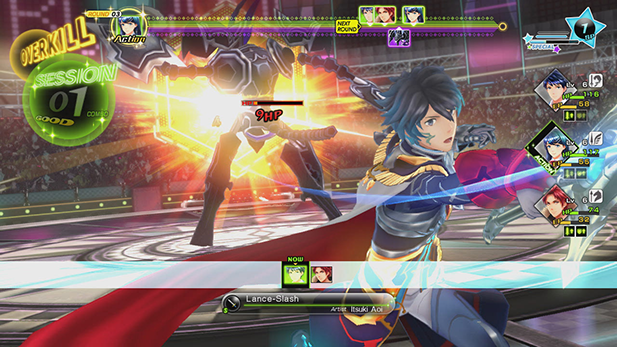
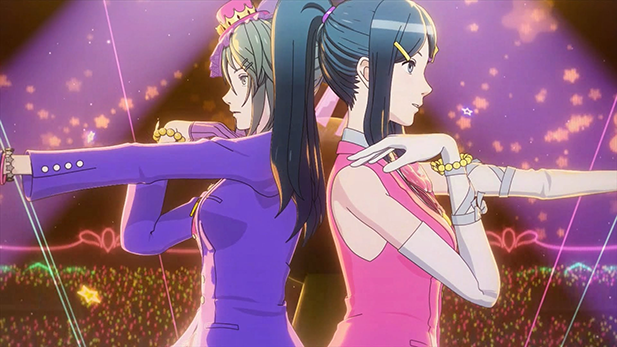
Tokyo Mirage Sessions ♯FE (Wii U)
Atlus, Nintendo
For all the shit I give them, rightfully, I have a soft spot for JRPGs. They seldom surpass my expectations, but when they do, I tend to fall in love. Tokyo Mirage Sessions ♯FE, an enjoyable JRPG brimming with style, is probably the best example of this since, maybe, The Last Remnant or Pokemon BW2. It immediately becomes apparent that TMS is SMT, minus negotiation and fusion, and plus J-pop idols and glitzy spectacles in battle. The “FE” part is relegated to vague concepts and references (FE1 and FE13 are sadly overrepresented). A basic appraisal of TMS would be it’s an enhanced Persona 3/4 sans the schedule or weighty themes with Strange Journey sprinkled all over. Working from a solid SMT base of meaningful status effects and a limited number of skills, it focuses on making use of benched characters with instant switching and a considerable advancement of SJ’s Demon Co-Op (it’s “Press-Turn”, with the addition of FE’s weapon triangle) in the form of Session Attacks. It’s satisfying watching your party jump in for a flashy hit one after the other, dictated by learned “Session Skills” establishing flowing chains between damage types (as expected of SMT, this can also be done to you). As combat evolves, Sessions can trigger musical duets, which then resets the chain for an even bigger combo (and overkills provide extra rewards); the snag here is that Sessions are the one thing you can’t skip, driving me a little crazy by the end. This combat really shines in TMS’s exceptional boss battles. These are great half because of devious boss mechanics and half because of another FE-ism, reinforcements, adding a lot of tension. The dungeon designs are also probably the finest I’ve personally seen in a SMT. They strike the right balance of size and branches without overstaying their welcome and have visual flair to go along with thematic gimmicks. The only thing missing is that the game doesn’t feature much of an endurance challenge and it’s lamentably “save anywhere”. Overleveling is a concern, but even doing most of the side-quests by the end of each chapter, I found that enemies would quickly catch up with the next dungeon. I don’t mind the lack of demon fusion, as it usually bogs you down. The story and characters lean on the generic side, but humorous and cute moments make for a pleasant tone. TMS’s use of the gamepad for text messaging is oddly compelling. Even before considering the idol themes, which, while not typically my scene, are awfully catchy, this OST is among my favorite of the year.
VI
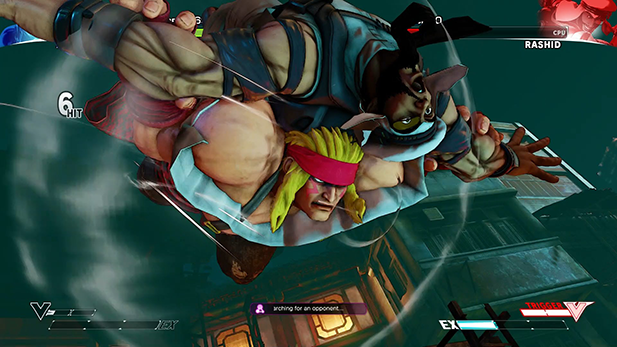
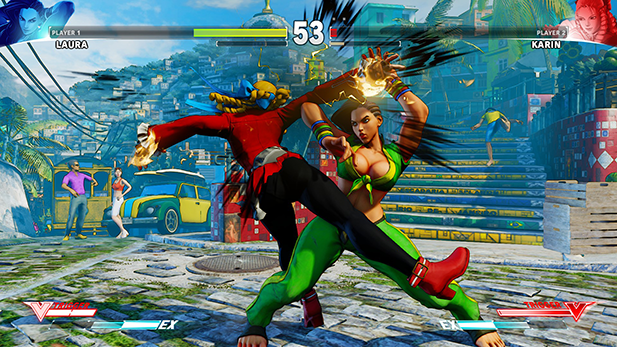
Street Fighter V (PC)
Capcom/Dimps, Capcom
Street Fighter V is the only fighting game I played this year, but it’s also the only one I needed. It’s a first (and final?) entry, but it isn’t nearly as unbalanced or buggy as those typically are. I liked SFIV, all things considered, but I can describe a lot of V’s appeal by contrasting the two. It’s an easier game to “play” with lowered execution barriers, which suits it fine because that element added more workload than creativity in IV: FADC was pointlessly burdensome and I tend to avoid 1-frame links anyway (don’t you dare tell me I’m getting old). It’s a more “honest” game (barring the Mika infamy), moving away from the vortex set play that was dominant in later IV. More focus is put on fundamentals, which Crush Counters (FA crumpling applied to pokes) rewards in spades. Short, high damage combos and weaker defensive options (e.g., no invincible backdash, reversals no longer cancelable) makes it a more direct, offensive game, which may end up suffocating playstyle variety, like in III, but it at least manages to better incorporate fireballs (lots of funny moments with returning Urien). Lazy Ultras are traded out for ArcSys influenced V-skills and V-triggers, which, to varying extents, flesh characters out. The music and 3D art style are also a step up (if you ignore some hair and those horrific Red Bull costumes) and feedback of your attacks is amazing. Veteran characters are revised slightly to keep it fresh (Gief got robbed though), but it’s the new characters who have caught my eye, better additions in design and thematically to what IV gave (Fang has that IV look though). The charismatic Rashid(ooo!), my main and oddly the story’s main character, is wildly fun to play, whether you are using him to put on nonstop pressure or do zany gimmicks with his crazy mobility and eccentric projectiles (damage was relatively puny in Season 1, but we’ll see how things go in 2). Another one, Laura, really plays to my love of Makoto in 3S, though she was overshadowed by Mika in S1. The whole season thing makes this tricky (I’ve played 98% SFV and 2% SFV “Dash”), so I’ll spare the specifics. Rebalancing is admirably limited to big annual updates, but it amplifies their changes for better (Chun’s air legs nerf) or worse (Alex lol). I’m ignoring the elephant in the room: Capcom’s baffling incompetence. Most of this is stuff I can overlook as poor features, but, as an online warrior, stacking input lag has a detrimental influence across the board and small things like jump-ins become frustrating (that, and this DualShock 4 I’m stuck with fucks up my thumb). The reactions to S2 have been mixed, but I do have faith the game will only get better with years.
V
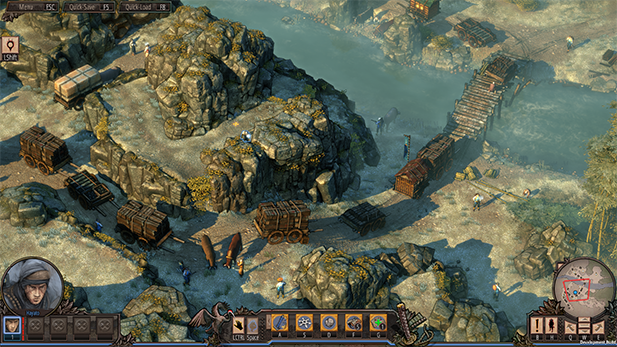
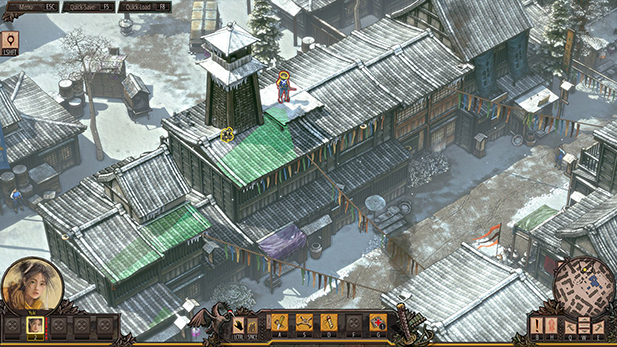
Shadow Tactics: Blades of the Shogun (PC)
Mimimi Productions, Daedalic Entertainment
I’ve always wanted to get into the Commandos series, but it’s never happened. Using real-time tactics to sneak a party of highly specialized units through a large map? Sounds right up my alley. Shadow Tactics: Blades of the Shogun claims to be a successor, so I jumped in and became instantly hooked. As anticipated, the outstanding level design perfectly accentuates the particular skills of your characters. Your party usually has two or three of the five characters, who must cover for each other’s weaknesses and the absence of the rest. While there is some overlap, the tools (traps, disguises, lures, sniping, etc.) are distributed in a way where every unit feels important (though Yuki is slightly too strong) and the map seems crafted around opportunities to make them shine (possibly together). Climbing roofs or swimming is exclusive to certain units, who may then need to open a path so their ally can take out a fully-armored guard. The characters themselves are made endearing through casual conversations they have in reaction to the environment or specific actions. Every chapter feels different with secondary objectives (think Hitman) or gimmicks, like snow leaving footprints, which help or hamper you achieving the goal. On replays, “badges” gives each map additional goals which spotlight their sandbox elements; too bad they are not tied into the game itself, especially the “speedrun” one, which would reward mastery. Enemy layouts, layering lure-immune sentries with multiple patrols, becomes dense to the point where, when combined with hardcore difficulty’s fast detection and deaths, each area turns into a puzzle. Herein lies a problem (and why ST isn’t my #1 or #2 GOTY): this process becomes extremely trial and error and the game knows it, as it pushes save-scumming onto you (even has a timer to remind you!). The low margin of error notwithstanding, juggling multiple units in full real-time in addition to terrain blocking your mouse clicks will cause plenty of issues, and it’s a question whether you want to lose 3 seconds, 3 minutes, or 30 minutes over random clumsiness (I stuck with the middle, but it’s not a question I want to answer as a player). The ability to sync up actions helps, but it’s no RTwP. It’s to ST’s credit that, despite indulging in my biggest pet peeve, I still really like it. Purely as a puzzle, unraveling stalwart enemy defenses is gratifying, while the concept, down to the level design, is too damn good to pass up.
IV
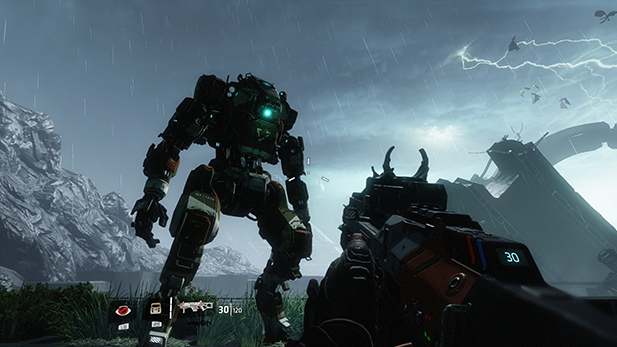
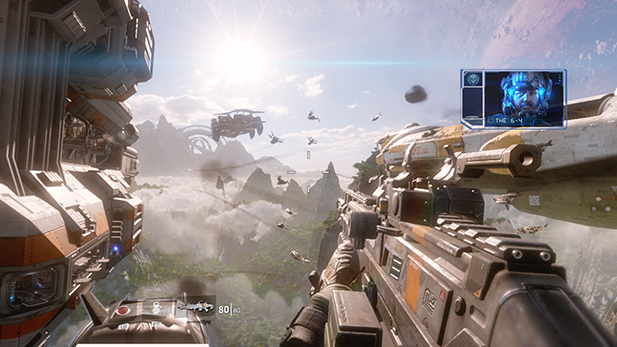
Titanfall 2 (PS4)
Respawn Entertainment, Electronic Arts
Titanfall 2’s campaign turning out so well may have been a surprise, but considering the pedigree and the base they were working from, it shouldn’t have been. I’ve only put a few hours into the multiplayer, which I feel may disqualify my analysis, but if it was only singleplayer it would still be here. Admittedly, they could have just as easily put the titans, free-running, miscellaneous options into a generic military campaign, but instead each of these are integrated to full effect. On Master difficulty, hitscan is as vicious as any cover-shooter, but by building up speed through wall-runs and slides, you can move faster than they can aim and pick them off. It’s honestly brilliant, but, with no enhanced HUD, not even radar, it does run into the classic Sonic the Hedgehog design limitation: you go too fast to react to what you’re running into. I’d say this tactic works half of the time, but Respawn foresaw that, which is why you always have a timed invisibility cloak to cover mistakes and open new avenues of attack. I still often felt like hanging back was the smartest move, so I can’t say it fully solved this. The parkour can also make the grace of traversing to the next waypoint feel like a 3D platformer, best seen when grabbing the inoffensive collectibles and hidden weapons. The visually impressive titans provide another fighting scheme, with the numerous titan bosses, each based on the MP’s unique options, giving you climactic duels often missing in FPS. Being able to instantly switch your titan loadout to the same MP selection provides a lot of toys to play with. BT, your titan AI, is also at the center of this sci-fi war/buddy-cop flick, where dialogue choices write out an action movie script. It’s a modest story, if not predictable, but there’s something noteworthy about how cleanly it’s executed. Similarly, the level designs of the campaign may be the best thing about TF2. Almost every level has a wonderful twist to it, e.g., a topsy-turvy factory building a battleground you’ll later fight in, a level that’s has the time mechanic and puzzles expected of a Zelda dungeon, a series of sky towers where robot enemies can be hacked into a small army for a later wave. Do a bunch a cool shit and fall in love with a robot in a nice little campaign, I can’t ask for more. Bears repeating that I need to further explore multiplayer, but I should say that I’ve enjoyed it, a respectable return to TF’s innovative mechanics, but the only map I liked and played “24/7” was (TF1’s) Angel City. Make of that what you will.
III
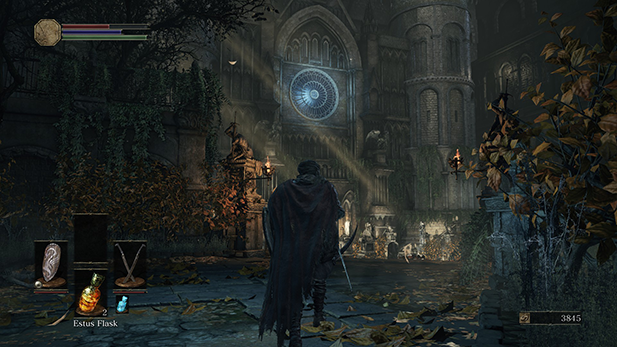

Dark Souls III (PC)
FromSoftware, Bandai Namco Entertainment
In 2011, I wrote my first GOTY list with Dark Souls at #5. Later came Dark Souls II (#6) and Bloodborne (#3). With Dark Souls III, it’s easily the most featured series, which speaks to the excellence of the formula; it’s not as special as it used to be, but I don’t see myself getting tired of it either. DS3 revels in this familiarity, most so since DS1 did it with Demon’s. However, DS1 was a big leap and DS3 is the end point of increasingly smaller jumps in quality, joined with a few steps back, giving each game something they’re the best (and worst) at. (BB was the only one “completed” in time for listing and it shows.) DS3 has had only one DLC, which was disappointing in size but did address PvP concerns. This is fine though, because this is the entry in least need of an expansion. The bread and butter of fantastic level design and bosses are at its most consistent. As usual, the best bosses are humanoid-like duels, which all have twists to them. For better or worse, they (and other enemies) have unpredictably long attack chains and varying speed for attacks with the same tells, more BB-like (thankfully, dodging is stronger, shielding not so much). It makes for more frustration, but I rather it was a little “unfair” than too easy. Poor balance among builds is a series tradition (I go 2-hand weapon and nothing else for the first run); this time it isn’t magic, which is terribly implemented, but parrying that can trivialize these awesome fights - shades of DS1’s Gwyn. Weapons now have some cool special moves to give him individuality, but their implementation makes them more of a nice bonus. While on a linear path with a separated hub, the design within areas is stellar, full of shortcuts, hidden spots, and challenging mini-bosses. I was very impressed with the layouts of all of the main ones, with the Cathedral and Irithyll being the strongest. There’s also a wonderful successor to DeS’s Tower of Latria. This, plus a certain small area, are DS3’s past references at their best. The overuse of winking at DS1 fans and BB’s aesthetic does leave a dent in the setting and lore though. I do wish it took more from DS2, mainly in terms of covenants and features. They finally brought healing back to the basics, even limiting the “humanity” stand-in, but it’s undone by how much you can upgrade your flask (not to mention what it does to magic). DS3 had a lot to live up to with BB and incredible The Old Hunters expansion, but the fact I’m indecisive without even considering 3’s DLC is impressive in itself. So, once again, maybe the best Souls game yet, but not by a wide margin. It’s a good of a series conclusion as any.
II
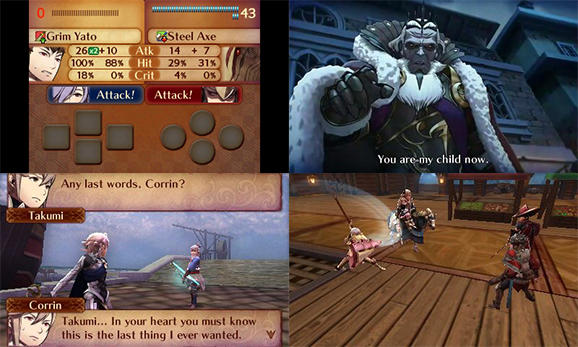

Fire Emblem Fates: Conquest (3DS)
Intelligent Systems/Nintendo SPD, Nintendo
Fire Emblem sure is weird these days. IntSys released Fates as two/three separate answers to a simple question: “Should SRPGs have interesting maps?” The correct answer, Conquest, gives us a top 3 FE. Fates inherits and fixes a few things from FE13. The botched “Pair-Up” is split into consistent offensive and defensive stances, the latter canceling out the former. By then allowing enemies to ruthlessly make use of it, a failed concept transforms into a superb one. FE13’s class system is reined in enough to make characters distinct, but remains full of potential (although this can be crippled by low weapon ranks). An example of this is how marriage opens the door to many possibilities. And children, no longer broken little monsters, fit in a lot better (mechanically, that is - they are downright inappropriate plot-wise). The new weapon triangle and removal of durability are ambivalent changes, not a big deal when it isn’t hurting balance (ninjas are really good, mages made weaker). CQ respects the series’ history of limited grinding potential and wide-ranging objectives. The sheer concertation of skillfully laid out maps effortlessly surpasses all but the masterpiece Thracia 776. The fundamentals of a good FE map are complemented with the ingenious map-changing Dragon Veins: Summoning a party of doppelgangers with shared health to clear out a second map or opening and closing multiple paths at once while balancing a wandering EXP-sponge NPC and the deadly swarm of ninjas who weaken you with every attack. Chapter 10 could be the best defensive map in the series, which takes a mean turn when a protective moat is suddenly drained. These deserve to be played on Classic Hard/Lunatic. I’ve had to restart chapters countless times, even on bosses (twice!), but with every attempt I get closer to a perfect strategy. CQ succeeds as a FE, but that also means coming with series-wide flaws. It’s always been possible to build super units by low-manning maps, but this doesn’t come up if you hold onto a big reserve, which is more my style. While there are no unusable units (some demand class changes), the four royal siblings are so damn good, not using them is effectively a challenge-run; Xander in particular has near game-breaking potential with stat boost items. Not so different from the also great FE12, “My Castle” and online features are a potential hole in the game’s integrity. Not only does it undo the finite amount of gold and, with DLC, EXP, there’s a powerful system of recruiting units and copying skills (most of which is hacked and passed on to legitimate players). PvP is trash. Being able to grind tedious supports isn’t so bad though. As a full game, CQ isn’t hurt by Fates being three games, except in one way: story. Because resolutions can only happen in the true/DLC route (still amounts to little), the protagonists have to be shockingly stupid for anything to fit; it’s more hole than plot. Along with the support conversations being phoned in, this is one thing FE13 can say it does better. Whatever, I’ll take it - anything to get a Fire Emblem like this.
I
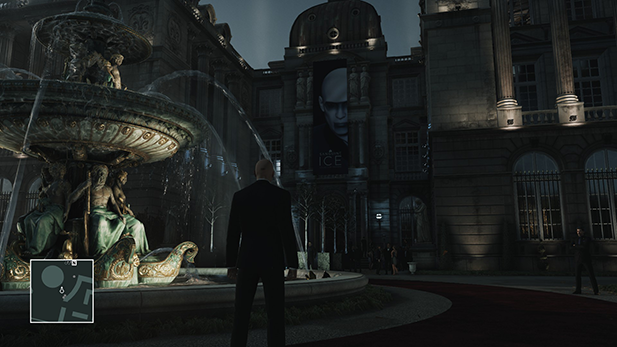

Hitman (PC)
IO Interactive, Square Enix
It was a close race, but the Blood Money fanboy in me won out. 2016’s Hitman (Tee Em) takes the positives of Absolution’s modernization and brings it back to the roots of one of the best sandbox series of all time. IO Interactive, as if trying to apologize for their misfire, has gone all out in making expansive, intricate maps animate with a daunting amount of scripts and rules. With so many ways to enter and move through a level, they had to make them feel like a living environment which is interesting from any angle rather than a mere stage. And this splendid attention to detail holds true for even entire city-blocks, taking the hitman concept to new heights. I prefer the darker atmosphere of the older games, especially the music, but the energetic playful tone unexpectedly fits. Both intentionally and not, it’s farcically funny game. Almost every mission has you take out at least two targets and make for an exit, as per custom, so that you are forced to fit in until you are all done, especially if you are aiming for the “Silent Assassin” challenge. Or maybe you want to cause some chaos? Considering the dozen methods of killing, including semi-scripted accidents, you are given a playground that still remains dangerous enough to keep you on your toes. HM, like its predecessors, is unlike most stealth games; a good Hitman level means something different than a good MGS or SC one, which are more about geometry or vision cones (this is why the dress-as-a-ninja challenge is a tenth as fun as you might think). It’s more about deception (“social stealth”), hiding in plain sight with a fairly intelligent disguise system and following social rules for that area. This means you spend more time trying to fool an AI than hiding from it. HM features the most consistent quality of maps in the series, with the ones playing to the mechanics’ strengths early on being the best. The episodic format encouraged thoroughly playing each of these before moving on to the next one and its worth sticking to that even after they’ve all been released. There’s a very serious caveat to all of this though. Unless you fiddle with the UI options, playing HM is like watching what will become your favorite movie of the year with someone who can’t shut up about what’s going to happen next. I ruined two maps like this before I caught on. Easy modes are compromises made to enable fulfillment (“winning”) at the expense of a game’s ideas (like blending up a juicy prime steak into a smoothie), and the better those ideas are, the more you're missing out. While IO didn’t have the decency to warn players with a big ol’ “NINJA DOG”, this is exactly what the sludge of UI and tips, not to mention the save-scumming, they smattered onto HM does. It turns clockwork masterpieces into fifteen minute linear checklist experiences. With a little discipline, HM becomes the exploration game of the year, if not decade, each level being something you can soak in for hours. So, maybe in the top 18 with all this junk on, #1 with it off. Perhaps the bigger error is that there is no Professional mode. The series figured out how to brilliantly handle quicksaves eighteen years ago with SA and no one seems to have paid attention. Continuity between the main missions, like BM’s notoriety, would’ve also been a good fit, but at this point I guess I’m just listing my wish list for Season 2, and Season 1 was remarkable enough as it is. Fortunately, this whole problem with saving goes away entirely with the extra missions being all or nothing. Escalation contracts, which pile on targets and limitations with each completion, when paced out well, really pushes 47’s abilities to the limits. Absolution’s Contracts Mode is used as base for an endless amount of player content, naturally 90% of it is second-rate or ways to complete challenges (still better than abusing saves on a single run), but they can also make you marvel at how many unessential NPCs in a map work as fun targets. Elusive targets are anti-save-scumming taken to the extreme, expiring in a short time and only giving you one real shot; I don’t really care about the exclusive suits they reward, but the heart-pounding tension is priceless. At first it seemed incredible how much content I was able squeeze out from each episode, but after considering how amazingly designed this whole package is, it makes total sense.
Honorable Mentions (In alphabetical order. Each image links to music.)
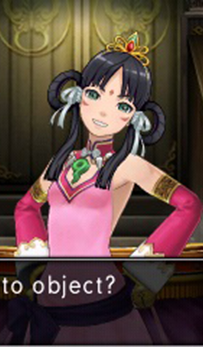
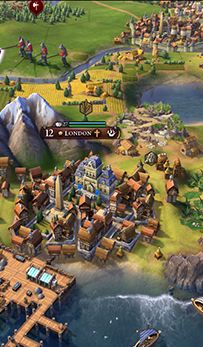
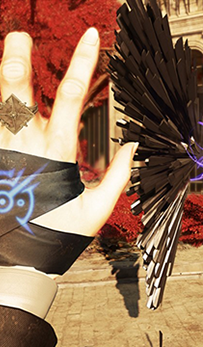

Ace Attorney: Phoenix Wright – Spirit of Justice (3DS)
Capcom, Capcom
Top-tier spin-off “Investigations 2” aside, the later AA series hasn’t quite matched the GBA trilogy. While 6 inherits 5’s optional fail state and overcompensating hand-holding, it’s a return to form for the mainline thanks to the content being so splendid. The first case is a slog, but after that it’s one good case after another, highlights being the third and, especially, the second half of the final one. 5 felt like it was pushing me through twists and puzzles, but 6 lets you have a few “eurekas” of your own, although another problematic inherence from 5 are the exciting, but automatic “revisualizations” (dumbed-down from AAI’s “logic”). Rafya’s seance is a plainly superior version of Athena’s mood matrix. SoJ’s new prosecutor is inadequately mild with tedious animations, but it also has the most intimidating villain since 1. The referential music is starting to get old (was meaningful in 5), whereas the fresh, charming 3D art style is advanced further, yet it knows not to stray too far (unlike Zero Escape being derailed by Telltale garbage).
Civilization VI (PC)
Firaxis Games, 2K Games
The new Civ is a city-builder in disguise, where the middling 4X elements exist mainly to disrupt or help that effort. The advance city management mechanics make up for other facets feeling tacked on (espionage) or messed up (religion) and planning districts adds depth to the shaping of your empire. The Civ V base (1UPT) has a troubling influence on combat balance and pacing, though it comes with some good (e.g., improved city-states), while the game has semi-helpless AI and poor multiplayer balance to start (rushing uniques can be way too good). The early game is always fun, in part thanks to the vicious barbarian units, but I’m going through motions by the medieval era to the point where I rather just restart (and I have, a dozen times). The prodigious OST does tempt me into later eras though. It’s arguably the most complete a vanilla release has ever been, but the truth is my love for the Civ formula, with goals awkwardly designed between single and multiplayer, is not as strong as it used to be (thanks Paradox?).
Dishonored 2 (PC)
Arkane Studios, Bethesda Softworks
Like its predecessor, Dishonored 2 undecidedly combines fantastic Thief-style level design with level design trivializing powers, but virtually everything is improved (exception: voice acting). I like the smarter guards and layouts, tougher enemy types, and Emily’s more creative powers, and I love being able to play without powers at all (it works too). The colonial-style Karnaca is colorful and brutal, a trade up from dingy Dunwall, though there’s a lack of subtly found in 1’s background details. Missions provide huge areas within a livelier city, though still falling into painstaking exploration porn if you want a semi-completionist playthrough. As flawed Deus Ex successors go, this narrowly edges out the also improved Mankind Divided, but a terrible, unchanged EXP system is almost unforgivable – and D2 has The Clockwork Mansion, an utter marvel of a mission.
Furi (PC, PS4)
The Game Bakers, The Game Bakers
A short and sweet top-down action game with shooter elements (at times, these genres flip in importance). It’s a pure boss rush, which does make it feel limited, and those otherworldly walking sections do drag on, but it otherwise succeeds at its straightforward premise. Bosses are varied with a cool futuristic manga look and balanced per a smart health/lives system which is just punishing enough. The modern-style moveset is given to you fully complete with no diluting progression mechanics. Combat mixes simple combos and parrying with bullet-canceling projectiles (both potentially healing you), climaxing with maze-like danmaku phases and intimate duels. It’s a jack of all trades. Two aspects that frustrated me were the essential dash feeling “laggy” due to an overlapping charge mechanic and really poor projectile readability for the final boss. The stealthy sniper “The Burst” is my favorite boss fight of the year, showcasing the blended mechanics, draped in stylish visuals and synth music, at its fiercest.
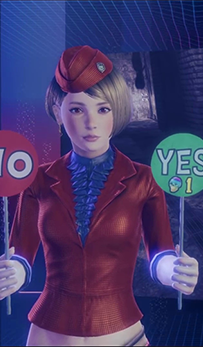

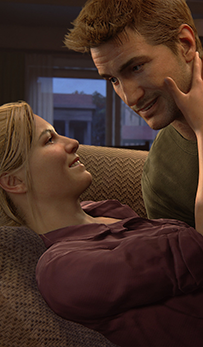
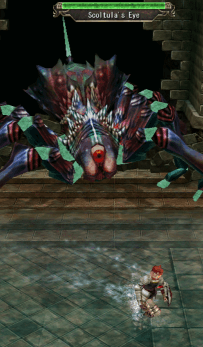
Let It Die (PS4)
Grasshopper Manufacture, GungHo Online Entertainment
LID is some great/mediocre addictive dungeon-crawling. The simpler Souls-like combat revolves around easily-baited humanoids, it’s more about keeping it 1 on 1 and item conservation. Bosses and ever-present “Haters” can seem too beefy or deadly, if not for your ridiculous mushrooms (i.e., spells). Basically, it’s a cycle of playing it safe, getting cocky, and surviving your mess or dealing with a punishing fallout (possibly grinding). This pattern becomes something terrific when you find yourself too far in to go back, cursing your shrinking inventory and praying for a new elevator as each floor becomes scarier. The generous F2P stuff is mostly irrelevant except for credit-feeding trivializing death; even grinding loot is the same whether you put in $99 or nil. The graphics are crummy, but the sound design is ace. For music, Yamaoka works his ambient magic while a hundred bands (!) were pulled it to do their take on the game’s title. Grasshopper-brand humor killed me a few times.
Shin Megami Tensei IV: Apocalypse (3DS)
Atlus, Atlus
An expansion to SMT IV (most of its locations and assets are recycled, comprising most of the best music), Apoc fixes a great deal of made IV (sub-)mediocre and ends up as one of the better SMTs. The difficulty curve is now sensible, though it went from a dependence on save-scumming to a costless optional fail-state. While time-consuming team-building eventually solves most problems for you, combat is elevated by taxing, unpredictable boss rushes, without a doubt the best moments of the game. Elemental affinities affecting skills deepens the classically addictive fusion and makes individual demons more unique. The straightforward plot is more thrilling than IV’s, but the setting is sadly dumbed-down with retcons. The shonen manga tone clashes hard with the classic SMT grimness, turning Dagda from interesting ally/villain into The Grinch. Dungeons are slightly better than IV’s chaff, but it’s no TMS.
Uncharted 4: A Thief’s End (PS4)
Naughty Dog, Sony Computer Entertainment
The best and worst Uncharted. At times during its four or five “chapter ones”, some “boss” “fights”, and the final act’s erratic pacing I wondered if this was a parody of cinematic games (as its multiplayer’s progression system is of those). UC’s non-combat elements (e.g., automated platforming), overabundant here, were never great, but seem worse with Tomb Raider now doing it better. Beyond going too far with the usually dull bits, ND has still reached new highs. The improvisation-heavy combat and encounter design, borrowing from UC3’s excellent shipyard and TLoU’s combat-stealth, surpasses their previous efforts (and TR’s), with stealth finally getting an equal opportunity. A shame it’s stuck being an unpredictably strict cover-shooter on Hard/Crushing, increasingly exchanging mechanics for challenge. The industry-leading dialogue, presentation, etc. has only gotten better with each entry and 4 is a testament to that. As excessive (and retreaded) the story-telling can be, it does set up a satisfying narrative conclusion few long-running series will ever have.
Xanadu NEXT (PC)
Nihon Falcom, Nihon Falcom/XSEED Games
Sometimes a game can go really far with nothing but excellent pacing and sense of progression, flowing you from one area into the next. NEXT doesn’t necessarily lack in mechanics (though its presentation is really showing its age), but it’s the dungeon-crawling goodness, full of nice puzzles and secrets, that won me over. Combat is like a simpler or more abstracted Ys (with a mouse, a PC “ARPG” would be a better fit, I guess), which ends up feeling a little clumsy by comparison. I didn’t like how stat-based the combat was, but the selection of equipment, skills, and spells was nifty; this backfires when stacking damage boosts can make encounters end too quickly. The room by room dungeon layouts, the core of the game, left me generally impressed and the way you would discover shortcuts back to the hub or other areas made me more annoyed the Souls games have stopped doing that. It’s really cool that something that holds up this well finally got localized after 10 years (not counting the odd N-Gage (!) version).
Closing Thoughts:
Now comes the fun part where I list some of the games I regret not playing in time for 2016's list: Raiden V, The Last Guardian, Mirror's Edge, Total War: Warhammer, Raiden V, Tyranny, Gears of War 4, Hearts of Iron IV, Steins;Gate 0, Attack on Titan, Battlefield 1, King of Fighters XIV, and Call of Duty: Modern Warfare. I started and put down Stranger of Sword City, which has been pretty great so far, because I had to wrap up this list. I held off on Pokemon Sun/Moon in hopes of a Switch version.
I ended up being really busy for the first half of this year, to the point whether I questioned whether I would do another list. The same will likely hold true for this year, so I'm not holding myself to it (even though there are so many amazing games coming out in just the first few months, it's tempting). Having said that, I ended up getting a lot of gaming in during the last few months, resulting in this huge 18 game list. Aside from the top two games, I actually had a hard time nailing down the order; it wouldn't be an exaggeration to say there was around a dozen variations of this list. Not entirely sure if that says something positive or negative about the games themselves, but it doesn't really take away the fact that, taken altogether, it was a very solid year.
In review:
1. Hitman ; Top class sandbox, the return of social stealth.
2. Fire Emblem Fates: Conquest ; The other two games are irrelevant to this list, tbh.
3. Dark Souls III ;
4. Titanfall 2 ;
5. Shadow Tactics: Blades of the Shogun ;
6. Street Fighter V ;
7. Tokyo Mirage Sessions #FE ;
8. XCOM 2 ;
9. DOOM ;
10. Overwatch ;
x. Ace Attorney: Phoenix Wright – Spirit of Justice ;
x. Civilization VI ;
x. Dishonored 2 ;
x. Furi ;
x. Let It Die ;
x. Shin Megami Tensei IV: Apocalypse ;
x. Uncharted 4 ;
x. Xanadu NEXT ;
Recommended Lists Coming Soon.
Thanks for reading.